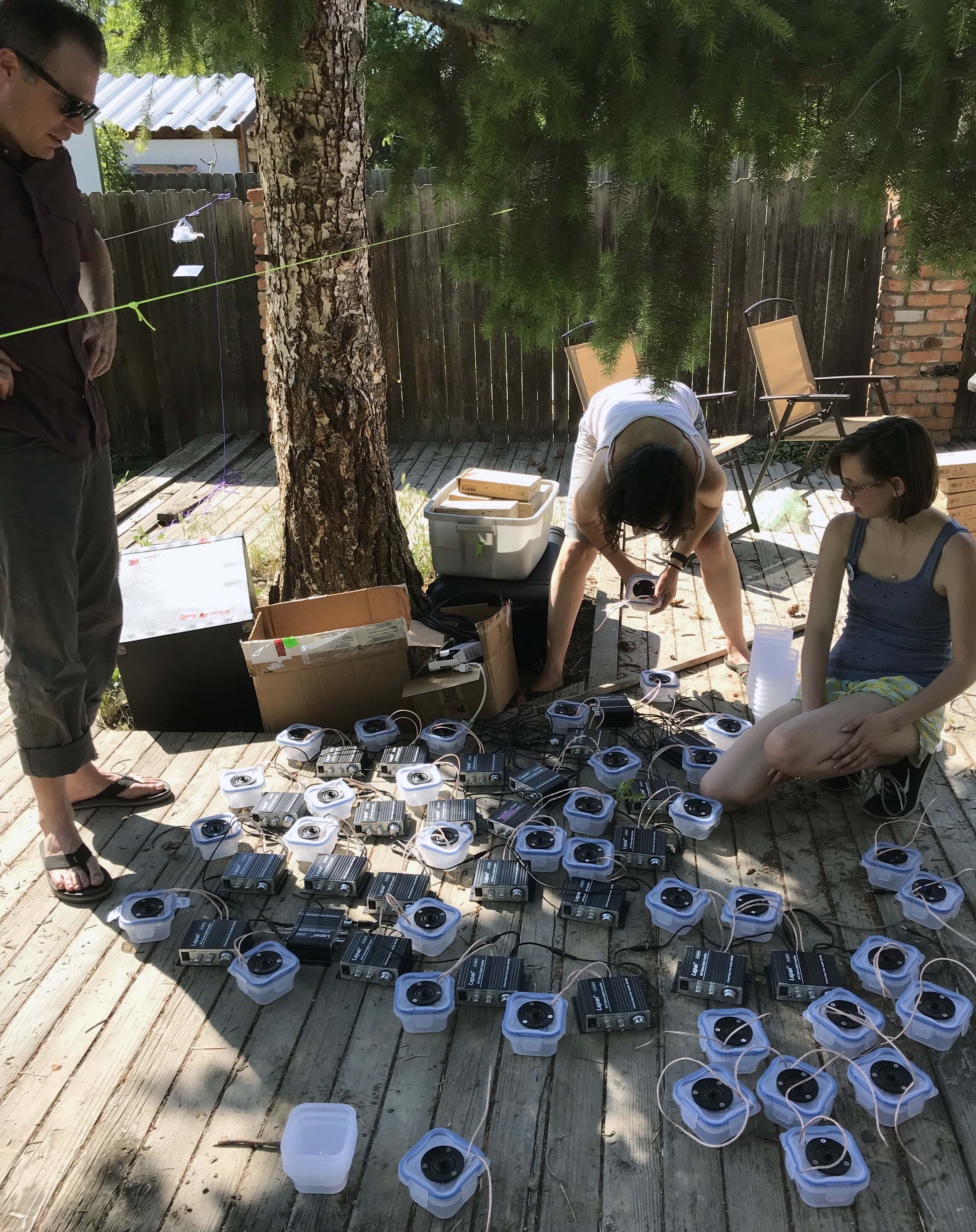Jodi Sedlock, photographer and researcher for our December cover story takes us behind her research and reminds us all that even when plans go out the window, there’s still a silver lining!
About the paper

The high-pitched buzz of katydid mating calls caught my attention while recording the cries of bats swooping and diving over rice paddies in the Philippines. While other researchers were tracking high-flying bats and their migrating insect prey, I sought to disclose low-flying bats’ role as natural enemies of rice pests, such as plant-hoppers and stem borer moths. I quickly discovered that bats were not the only source of ultrasound in the fields! Aggregations of male meadow katydids (Conocephalus longipennis)—each animal announcing a tick-tick-buzz asynchronously—generated an intense cacophony of ultrasound that triggered my passive bat detectors over mature rice plants. Experimental field studies, many led by co-author Dr. Jesse Barber, had revealed how prominent features of the acoustic environment within our hearing range, such as traffic noise and white water noise could alter habitat quality for animals. Chorusing meadow katydids provided an opportunity to explore how the ultrasonic environment alters habitat quality for bats listening for echoes amongst this din. My initial study of bats foraging over rice paddies found that they biased their activity towards newly planted (quieter) rice paddies. I suspected that this was partly due to noise-avoidance, especially among bats whose calls overlapped in bandwidth with the katydid chorus.
Building the phantom chorus


To test this hypothesis, Dr. Jesse Barber and I embarked on designing and building a speaker array that could mimic a katydid chorus. This involved international collaboration from an undergraduate at Lawrence University, Sarah Woody, as well as students from Dr. Barber’s Sensory Ecology Lab at Boise State University, Dr. Dylan Gomes and Juliette Rubin, and a researcher from the International Rice Research Institute, Philippines, Dr. Buyung Hadi. How could we create an acoustic environment at the spatial scale and intensity behaviourally relevant to wild foraging bats? Given the limited reach of ultrasound, the answer was clear: we needed an aggregation of speakers—a lot of them! After trial and error, we settled on a system of 25, 4-speaker units each powered by an individual amplifier and powered by an AC circuit installed next to the rice paddy. During the wet season of 2018, we hauled 140 custom speaker units, and 70 lbs of speaker wire across the Pacific—from Wisconsin to the Philippines—to troubleshoot installation of the array. It didn’t go smoothly. Tropical storms turned the array into an enormous wind chime—the metal reflector plates blew and banged against the poles and each other; sun-degraded rubber strips snapped and left speaker units dangling from wire; and the energy expended trudging through the mud was immense. After troubleshooting these and other challenges, it was clear that our original plan of five replicate sites was not feasible (at least not on our budget!). Instead, we consolidated our arrays into two replicate sites and began our alternating treatments, whilst passively recording bat echolocation throughout the night.
What did the phantom chorus reveal about bats’ response to insect noise?


We were all surprised how tolerant bats were to the ultrasonic cacophony we had created. Some bats—particularly the black-bearded tomb bat—were likely flying outside the reach of our phantom chorus; however, the vast majority of bats whose calls we recorded were foraging within a few meters of the speaker array! This level of noise tolerance is testament to hundreds of millions of years of evolution, honing their ability to echolocate tiny insects in an acoustically convoluted environment. Nevertheless, despite our inability to replicate the spatial density of a natural katydid chorus, the phantom chorus “nudged” bats whose calls spectrally matched the chorus upwards, away from the rice paddies. The trophic consequences of this effect, however small, are compelling. Does the chorus provide an “acoustic shield” for flying insects bathed in ultrasound immediately above rice? Do eared moths and other ultrasound-hearing insects orient towards the chorus as a beacon of safety? These and other questions are ripe for investigation.


About the author
I am an ecologist at a four-year residential liberal arts college who was thrilled to join the Barber Sensory Ecology lab for this adventure. I have spent 25 years documenting bat assemblages in changing landscapes across the Philippine archipelago—across elevation, forest and cave disturbance gradients. Today, I am adopting an experimental approach to explore the ultrasonic realm of the acoustic environment. I am eager to learn how animals interpret the sound environment, and in turn, how their response shapes the habitats in which they live. Currently, I am exploring how eared moths (crop pests) interpret ultrasonic insect choruses.
